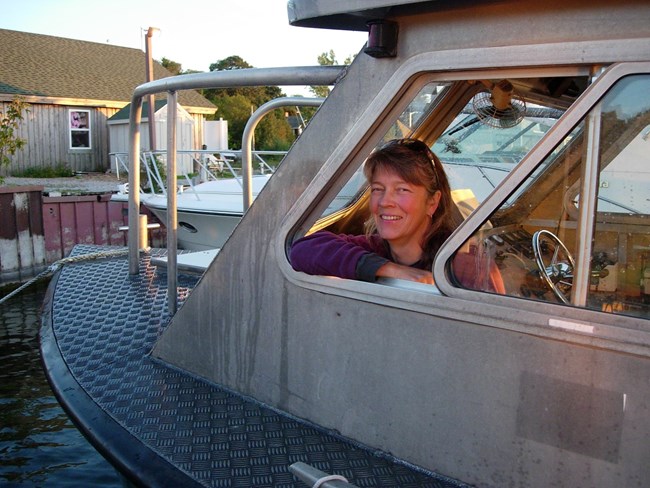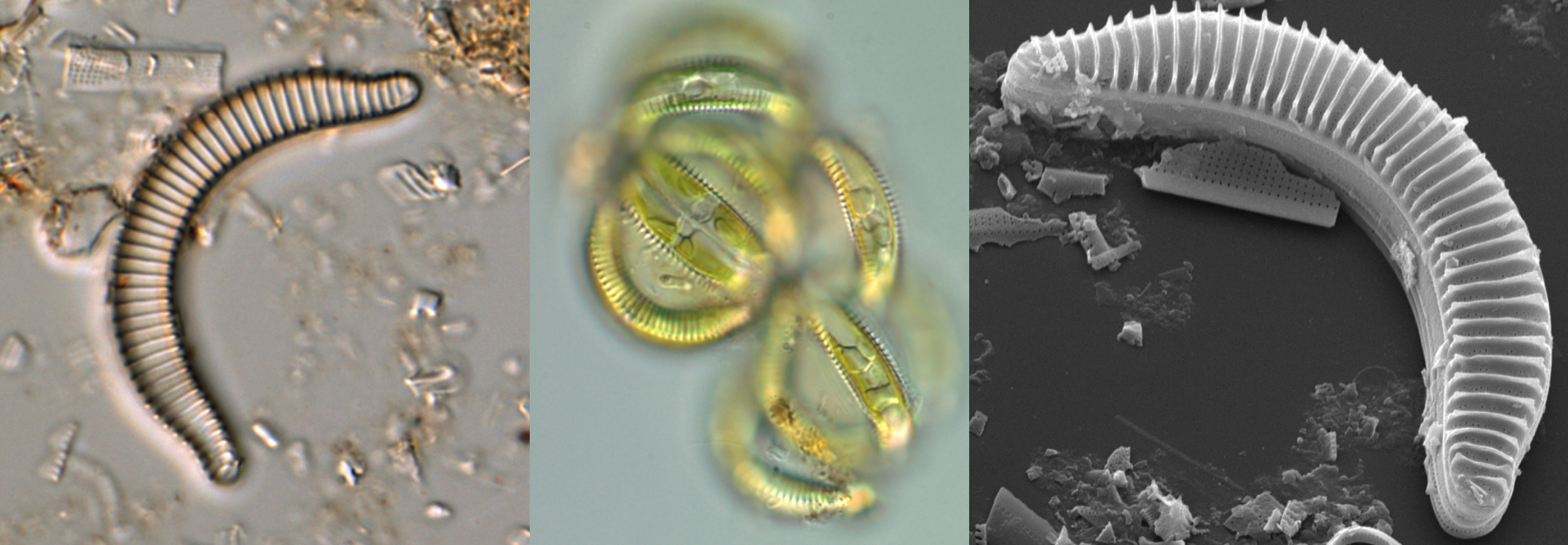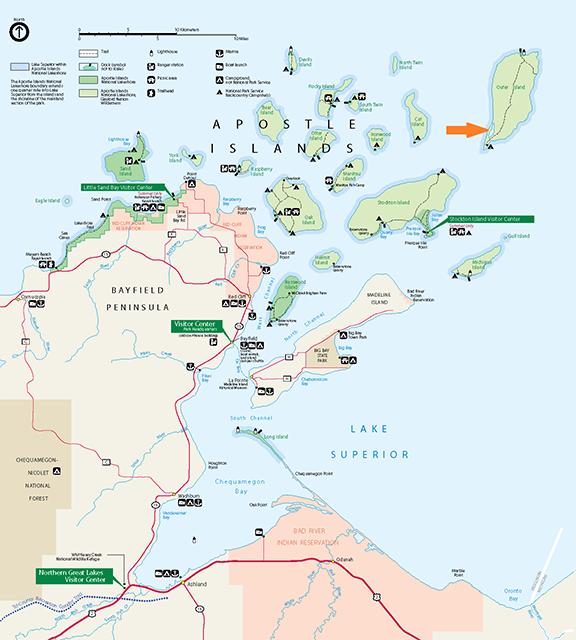Last updated: January 8, 2024
Article
I Thought I Had to Be Dead!

Mark Edlund/St. Croix Watershed Research Station
When told about this honor, Joan said, "I thought I had to be dead!" Fortunately for everyone involved, she is not required to be dead. The diatom, though, is very much dead.
Diatoms are a type of algae with cell walls made of silica. When they die, portions of the cell walls called frustules settle into the bottom sediments and are preserved like tiny bits of glass. Different species of diatoms can be identified by the unique patterns of their frustules. We use them to monitor environmental changes in lakes and rivers because the diatom community composition shifts in response to such changes. Thus, the layers of frustules contained in bottom sediments provide a history of water quality going back hundreds of years.

Mark Edlund/St. Croix Watershed Research Station
“The genus Semiorbis is really uncommon. I’ve been collecting diatoms since 1987 and have only found it twice. Outer Island is one of those places”, says Edlund. Live colonies were also collected from Outer Lagoon in 2015.

NPS
If the Outer lagoon created a unique environment for Semiorbis eliasiae, the fate of that environment is in question. A large storm in September 2014 breached the long-shore bar that separated the lagoon from Lake Superior, essentially creating a cove. However, by July 2020, about one-third of the original lagoon had been re-isolated from Lake Superior with a sandbar.
Specimens of Semiorbis eliasiae are permanently preserved in diatom collections at the Academy of Natural Sciences in Philadelphia, The Canadian Museum of Nature, and the Science Museum of Minnesota. A paper announcing the discovery was published in the journal Diatom Research (DOI: 10.1080/0269249X.2021.1875053).
